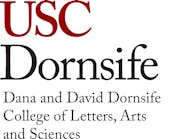The overarching goal of my research is to develop statistical and computational methods to leverage large biodiversity datasets to learn about ecological processes.
While we know that the distribution of some species is changing, it is actually very difficult to make reliable inferences as to which species are declining and by how much from the often messy and complex historical and spatial datasets that we have to work with — for example, historical museum records, where species occurrences are aggregated from studies with different sampling procedures. In order to address this gap, my research focuses on determining if and how statistical models can be applied to historical records without yielding biased trends. In my research I also apply these statistical models to determine how the distribution of pollinators has changed through time, where museum records provide lots of information. I am also interested in determining which drivers (e.g. pesticide use, climate change, land use change, etc.) are causing the most decline of the most pollinator species.
Another aspect of my research is to understand the processes that shape communities, for example I have combined experiments and modelling to understand how the structure of body size in a community affects the stability of food webs. In more recent work, I used large-scale simulations and machine learning to identify the signal of metacommunity processes in ecological time series.
Experience
-
–presentAssistant Professor of Biology, USC Dornsife College of Letters, Arts and Sciences



